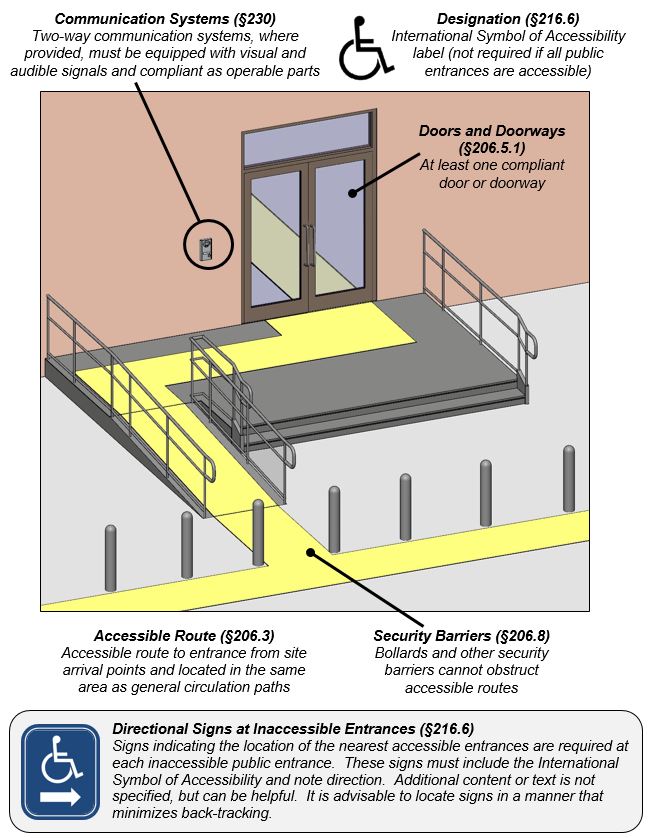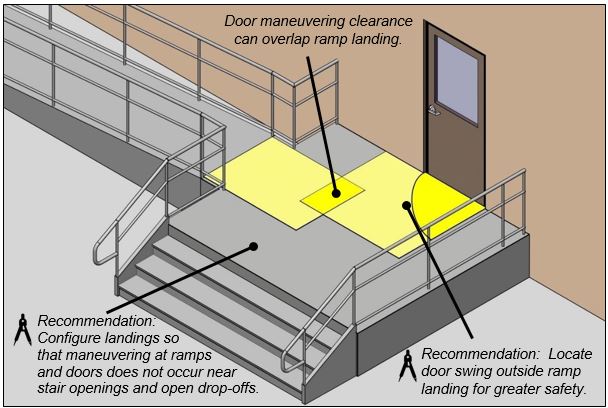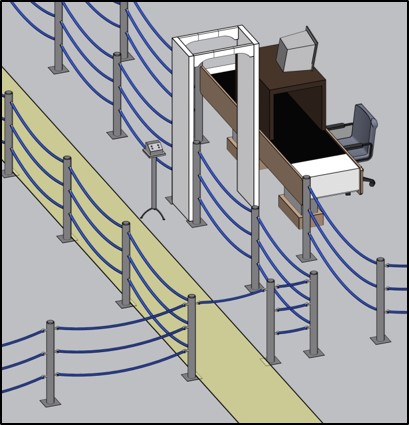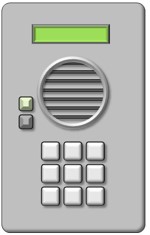Components of Accessible Entrances
Entrance Landings
Entrance landings must accommodate door maneuvering clearances as well as landings for provided ramps.
Entrance Landing
Security Barriers [§206.8]
Accessible route adjacent to security screening device
Security bollards and screening devices at accessible entrances cannot obstruct accessible routes or accessible means of egress. Accessible routes can be adjacent to metal detectors and other screening devices that do not accommodate all people with disabilities, but the route must be located so users can maintain an equivalent level of visual contact with personal items.
Restricted Entrances [§206.4.7]
If entrances are restricted to certain occupants on a controlled basis, at least one must comply in addition to public entrances required to be accessible. This applies to those entrances where entry access is verified by security personnel and is strictly limited to certain occupants, but no one else, including guests or companions of authorized individuals. All other types of entrances, excluding service entrances, are considered “public entrances” under the Standards, including employee-only entrances requiring keys or access cards or codes but that lack the level of security of restricted entrances.
Two-Way Communication Systems [§230 and §708]
Where two-way communication systems are provided to gain entry to a facility or to restricted spaces, they must include visual and audible signals to accommodate people with hearing, speech, or visual impairments. This applies to all entrances equipped with such systems, including those that are inaccessible. Lighted signals should have labels to indicate their meaning. If handsets are provided, cords must be at least 29” long. Control buttons and other operable parts must comply at those systems located at accessible entrances.





User Comments/Questions
Add Comment/Question